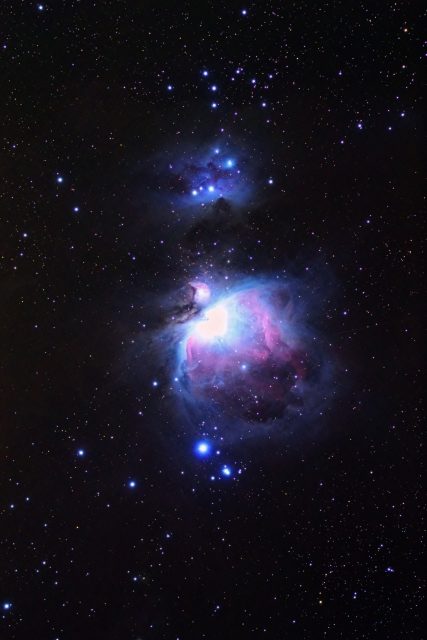
Man, dark skies are the best! I have a better image here with just 6 subs than with my last attempt I did using 56 sub-images taken from the middle of a metro area. You just can’t beat a good dark place when it comes to astrophotography.

Man, dark skies are the best! I have a better image here with just 6 subs than with my last attempt I did using 56 sub-images taken from the middle of a metro area. You just can’t beat a good dark place when it comes to astrophotography.
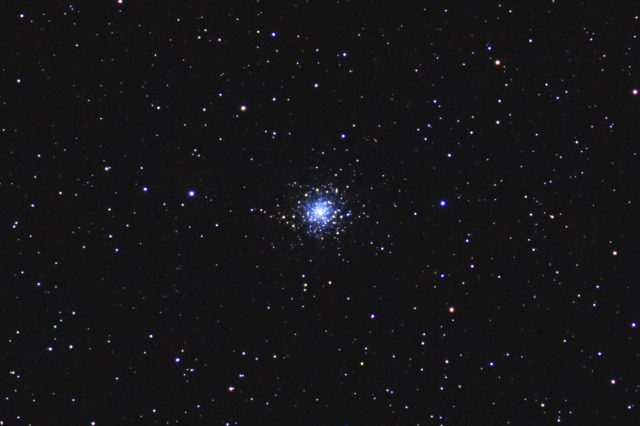
M79 is one of those globulars that sometimes gets glossed over for all the goodies in Orion, which is right above Lepus. I can’t remember shooting it in the past, but I may have something on it that I just don’t quite know where or when.
Update:
I found it. 10 years ago in Januarly of 2007 I shot it with an 8 inch, F/4 Schmidt-Newtonian. Here’s the combined data from that with this shot:
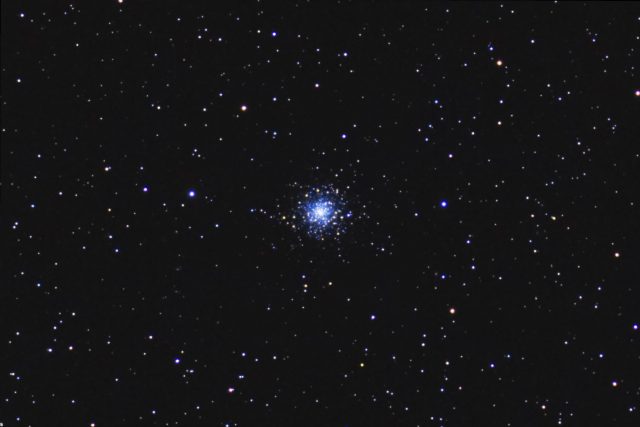
This is a 100% crop of the central area of the frame. It lies in a field that is full of faint fuzzies, including NGC 1886, which is like a miniature version of famous edge-on galaxies NGC 4565 or NGC 891. It got cropped out in this view, unfortunately.
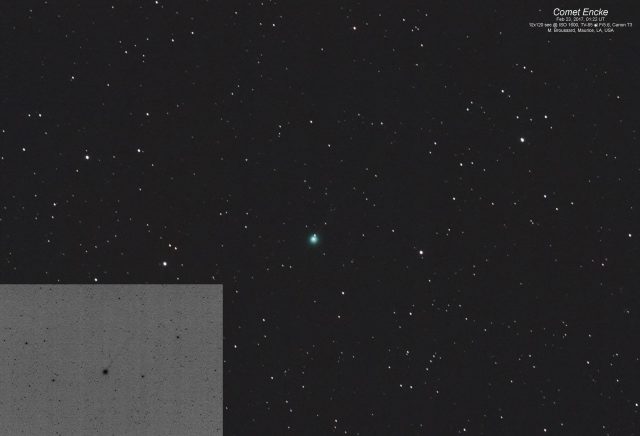
This is probably my last Comet Encke shot for this go-around. It is so close to the horizon at the end of astronomical twilight that it is hard to get any good data. Only if the horizon is exceptionally clear from this point forward will I attempt to shoot it again.
It still shows a nice tail, despite being in the muck at the horizon. The negative insert shows the tail the best, but it is also somewhat visible even in the positive image.
I had guiding issues for this shot, so I was not expecting much of an image from the data. But, it still came out OK despite that.
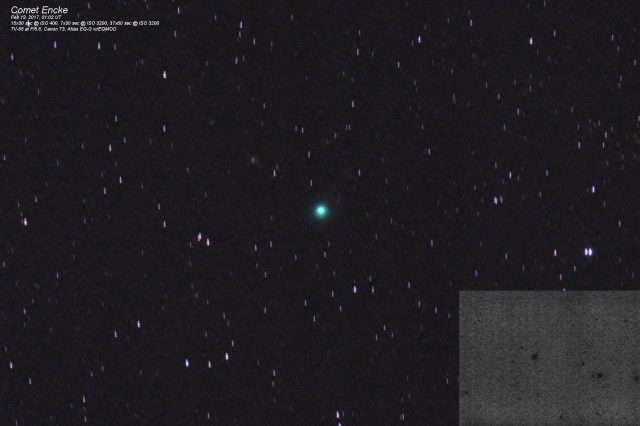
I did it. I drove out of the city to a new spot I found on a Light Pollution Map. It was only 30 to 40 minutes away and very dark by today’s standards. It is a dead-end Parish road with no houses for a few miles, which means I didn’t have to trespass on someone’s property. I just stopped at the end of the asphalt and setup shop. 🙂
I was able to shoot with ISO 3200 even with Comet Encke close to the horizon. It was dark enough to notice a little zodiacal light there, too. With these kinds of conditions, I was able to pick up Encke’s tail.
The data was shot in three sets. Two sets of 15×30 sec @ ISO 400 and 7×30 sec @ ISO 3200 while it was still twilight and finally a set of 37×60 sec @ ISO 3200 started just before twilight officially began. About 48 minutes total integration.
The main image has been cropped, but the enhanced negative insert is more of the full field. You can see that the tail actually goes out of the field of view. Amazing!
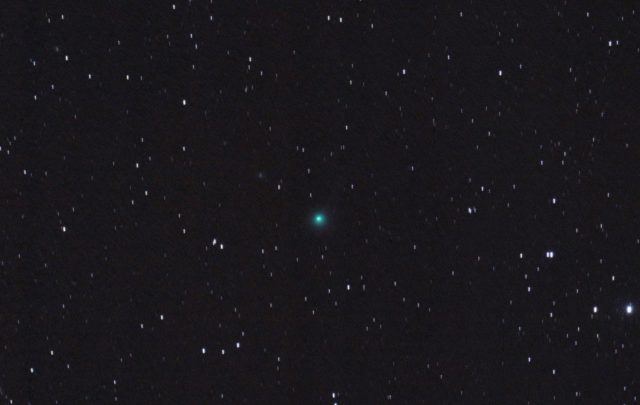
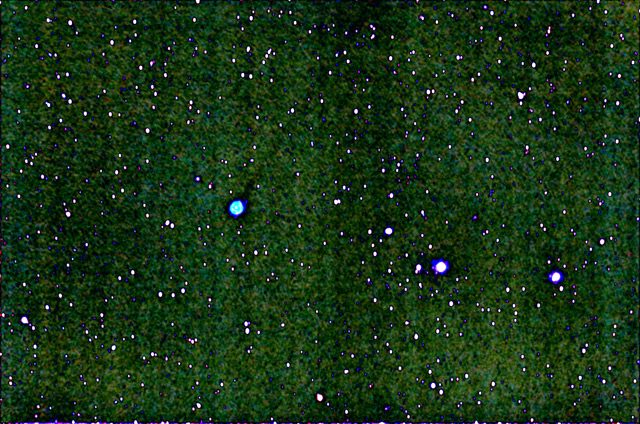
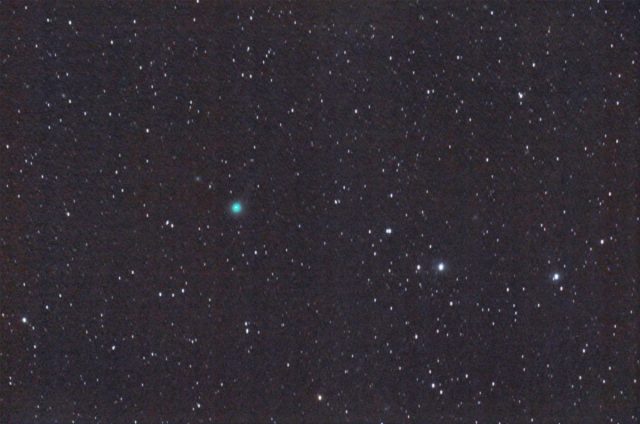 Two enhancements that show tail length.
Two enhancements that show tail length.
Unfortunately, Comet Encke is all I got this evening. While I was doing a better polar alignment and setting up to shoot the Horse Head, a huge fog bank rolled in quicker than I even noticed and it was thick. Oh, well… I took that as my cue and shot my calibration frames and left.
I also did a star freeze rendition and it came out ok. It just doesn’t show the tail as well as any of the above images:
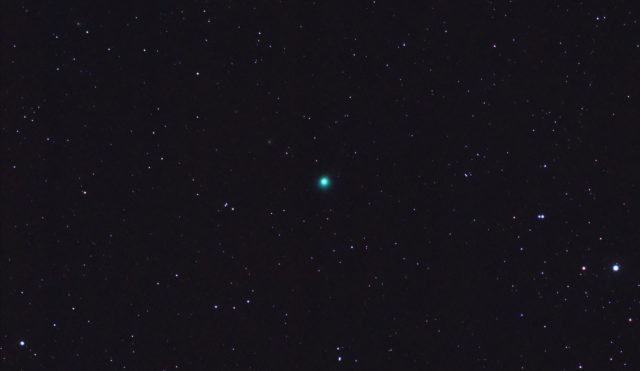
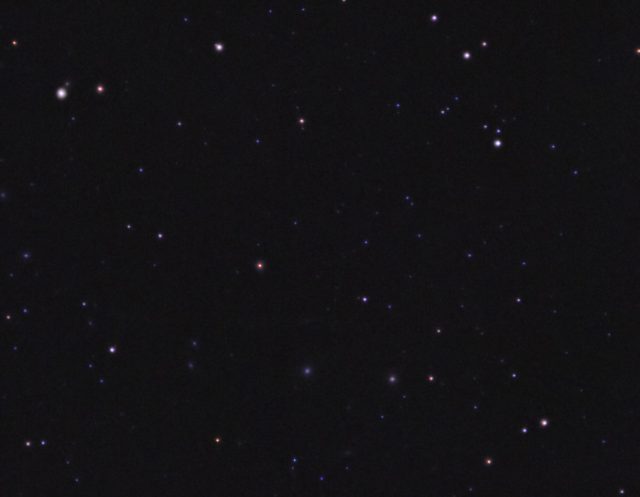
Here is another one of those experiments I do. LoL. This time it was with a software program called SharpCap. It can capture images from planetary/guider cameras like the Touptek, ASI or ZWO cameras. Sharpcap’s claim to fame is the ability to stack the images you take on the fly so that you can almost get a “live-view” like experience. I thought it was neat and easy to use.
This is only 7.5 minutes worth of exposure, so it is not really that deep. But, it is interesting to be able to get this much with an under $200 camera and a small finder scope.
I also captured 7 x 15 sec exposures of M13 in a live stack. Not quite enough data in the stack for good star colors with just 1.75 minutes of exposure , unfortunately. But, it shows the globular well enough. Check it out:
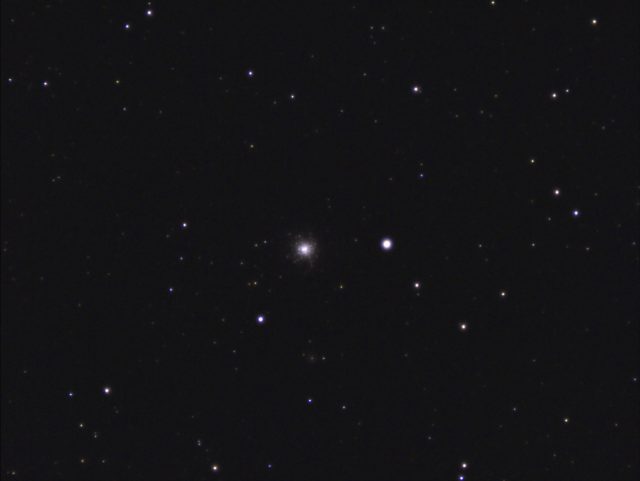
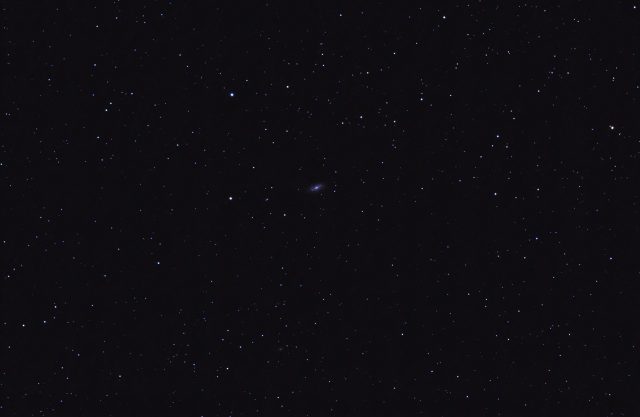
I needed to test guiding with exposures of 3 minutes or longer, so I used NGC 2903 since it was in a convenient location. This size object needs more image scale to show it better, of course. But, I kind of like the wide view that shows the galaxy and star field in context.
Btw, in this image, north is to the left. Also, if you noticed, another small galaxy, NGC 2916, is also visible in this image. It is below and slightly left of NGC 2903 in this view.
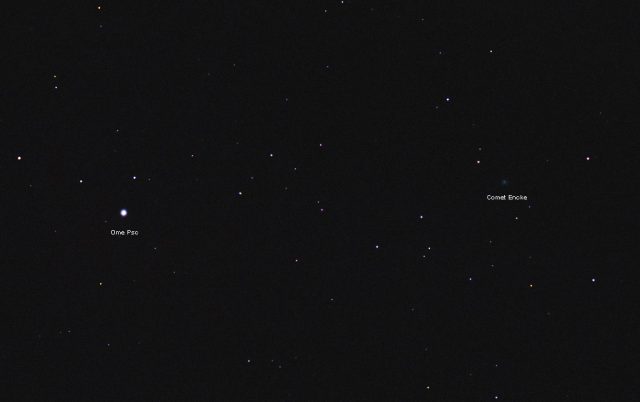
Not much to look at here. Comet Encke was next to one of the brighter stars in Pisces and deep in the muck and haze of LP and poor transparency skies. I was lucky to get even this much.
Here’s just the comet centered in a close crop that excludes the bright star:
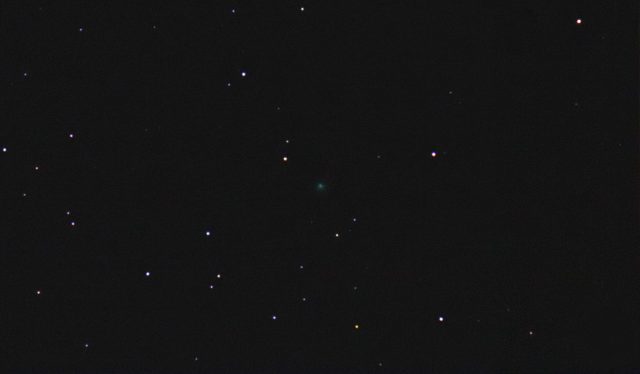
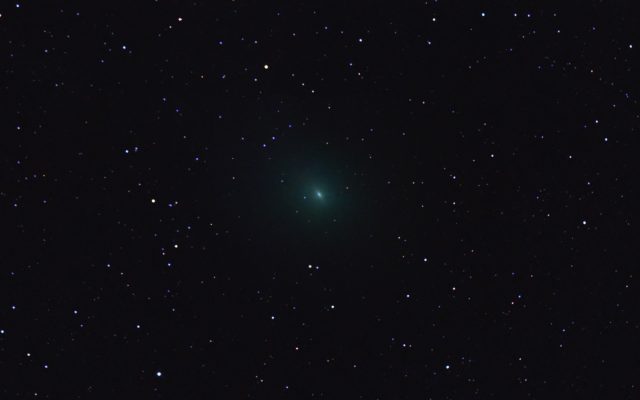
Taken in bright moonlight and bad LP in the hours before dawn on Feb 10, 2017. 45P is so dim that it barely showed up in the sub-images. I almost thought I was not in the right place. Luckily, I kept the scope pointed at that spot and kept shooting images until daylight.
BTW, the image above appears in Wikipedia for the entry on comet 45P/Honda–Mrkos–Pajdušáková.
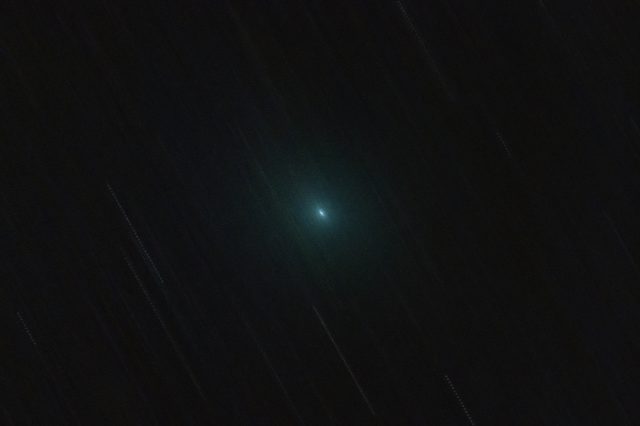
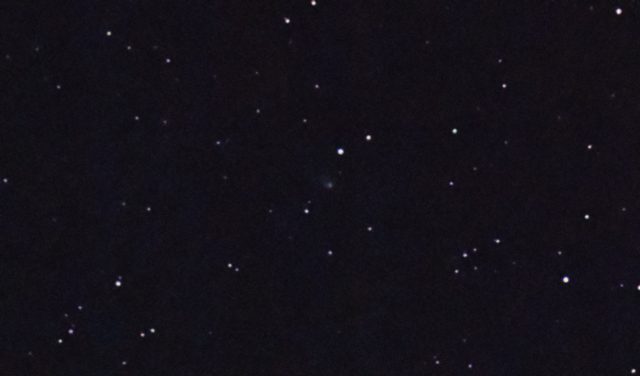
I had time for just a quick peek at Comet Johnson before moving on to my main target, Comet 45P. It was not at an optimum spot and ISO 400 maxed out at 60 sec exposures with all the LP and moonlight. So, it was not very deep and has noise and low color. But, at least I can see that not much has changed since the last time I shot it. This is supposed to be the next photogenic comet, coming this summer to a sky right above you. 🙂
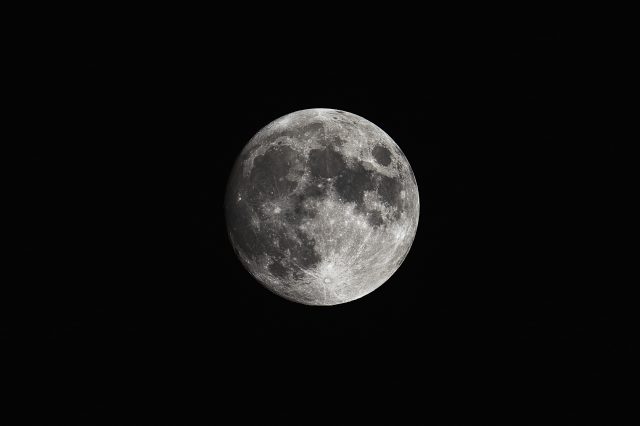
This is six frames taken at 1/800 sec @ ISO 100 using the TV-85/Canon T3 combo. I did an offset removal on each frame in IRIS and then median stacked them. One round of sharpening and wavelets in IRIS, too, but that was it. Contrast adjustment in PS and then posted here.